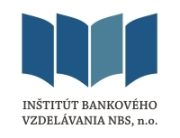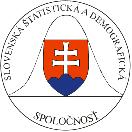BackgroundThe Slovak economy has performed solidly over the past decade, with real GDP growth averaging 4.2 percent and inflation staying below 14 percent. The lowering of trade barriers, progress in restructuring the economy, and the reorientation of trade to OECD markets, all supported economic growth. However, the unemployment rate remains high and has not fallen below 12 percent since the start of the transition.The present government assumed office in October 1998 amidst signs of vulnerability, including a substantial depreciation of the currency upon its forced flotation. The government adopted strong policies, including an ambitious fiscal consolidation plan, to restore macroeconomic balances and lay the basis for sustainable economic growth. The narrowing of the fiscal deficit, the exchange rate depreciation, and a hardening of budget constraints led to a substantial reduction of macroeconomic imbalances in 1999-2000. But economic growth weakened to about 2 percent a year during this period, as contracting domestic demand largely offset the remarkable recovery in net exports.After two years of subdued domestic activity, strong private domestic demand and expansionary fiscal policy buoyed economic growth, which recovered to over 3 percent in 2001. Increased profitability, enterprise restructuring, and reduced corporate income tax boosted fixed investment, while rising real wages and employment, personal income tax reduction, and the redemption of National Property Fund (NPF) bonds underpinned vigorous growth in private consumption. The general government deficit widened by a half percentage point of GDP to 4 percent of GDP in 2001, mainly reflecting income tax cuts and the removal of an import surcharge.Economic activity has since accelerated further, and unemployment and inflation have continued to ease. Real GDP grew by 4 percent year-on-year in early 2002, and sustained increases in employment have made a dent in the still-high unemployment rate. The sustained pickup in the pace of economic activity has been accompanied by favorable price developments. With unit labor costs growing modestly, limited administered price adjustments, and stable food and fuel prices, core and headline inflation were 3.2 and 6.6 percent, respectively, in December 2001, and have since fallen further.However, in a weakening external environment, surging imports and decelerating exports led to a widening of the external current account deficit from 2001. Strong domestic demand and the removal of the import surcharge contributed to a surge in imports last year, while the European slowdown and Volkswagen Slovakia’s restructuring works contributed to weaker exports, although exports are now recovering. The external deficit has been financed mainly by foreign direct investment (FDI) inflows, but increasingly by debt-creating inflows since the second half of 2001. However, recent large privatization receipts from abroad have strengthened the external position. On structural reforms, following recent progress in some areas, the authorities‘ priority remains making the economy more productive, flexible, and resilient, in a context of preparing for accession to the European Union. The main banks and utilities have been restructured and privatized, fiscal transparency and control improved, quasi-fiscal activities curtailed, and the legislative framework strengthened. But the remaining agenda is considerable, including further corporate restructuring and labor market reform; strengthening banking supervision; preventing new health sector arrears; introducing a mandatory, funded pension pillar; and strengthening state administration and the judicial system.Executive Board AssessmentExecutive Directors were encouraged by the recent performance of the Slovak economy in a difficult external setting. The policies implemented over the past several years have helped restore macroeconomic balances and strengthen the economy, including through the attraction of sizeable FDI inflows. At the same time, Directors expressed concern about the widening external current account deficit, rooted in part in excessive fiscal expansion, and the risks this poses to economic prospects.Directors agreed that the short-term outlook remains positive, provided the right policies are undertaken. Domestic activity is buoyant and a continuing economic recovery in Europe should help sustain it going forward; and data through mid-year confirm the expectation of low inflation in 2002. Directors expressed concern, however, that excessive domestic demand pressures could keep the external current account deficit large-or even increase it-although they acknowledged the partly temporary factors behind the deficit, and the recent strengthening in export performance. Directors saw a prompt tightening of fiscal policy as essential to put the external accounts and economic growth on a sustainable basis.Directors urged the authorities to take all necessary measures to meet their fiscal deficit target for 2002 of 41 percent of GDP. They expressed concern about slippages in the budget, particularly on expenditures, and noted that on current trends the general government deficit would exceed 5 percent of GDP. Directors therefore recommended timely measures, mostly on the expenditure side. They also encouraged the authorities to accelerate reforms to halt arrears in the health sector, introduce the second pillar of the pension system, and streamline the civil service and public administration. Delays in introducing measures would pose risks to the fiscal deficit targets for both 2002 and 2003, potentially compromising medium- term objectives.Given the priority of achieving sustainable medium-term fiscal and external positions, Directors welcomed the goal of reducing the general government deficit by at least 21 percent of GDP over the next 3 years-primarily through retrenchment of government spending. However, achieving that and other deficit targets would depend crucially on formulating the budget, the legislative initiatives that affect the public finances, and similar fiscal instruments, with these targets firmly in mind. The need for substantial expenditures related to EU and NATO accession, including infrastructure upgrading, will make achievement of the fiscal targets an even greater challenge.Directors commended the authorities for their skillful management of monetary policy, which had delivered declining inflation in a context of economic recovery. The April 2002 increase in interest rates was an appropriate preemptive action to avoid the inflationary pressures that might develop if current external pressures persist. At the same time, monetary policy was not the best instrument to address the excessive demand pressures on the external accounts, as it might weaken competitiveness and dampen private sector activity.Directors noted that the central bank had worked effectively within the current monetary policy framework to reduce inflation. With regard to the medium term, achieving disinflation objectives will require enhanced communication to the public and stronger policy coordination, including to mitigate the second-round effects of the 2003 administered price increases. A few Directors recommended a more transparent charting of the Slovak Republic’s intended path toward ERM II and, in due course, monetary integration with the euro area. Directors welcomed recent structural reforms-notably the restructuring and privatization of the main banks and utilities, and improvements in fiscal transparency and control. They cautioned, however, that an extensive agenda of unfinished structural reforms remains. Directors stressed the need to raise productivity and growth prospects by removing remaining labor market rigidities and improving the business environment, including continued reduction of the administrative burden on small and medium-sized enterprises.Directors welcomed the authorities‘ steps to strengthen the financial sector, and their determination to complete the financial reforms identified in the Financial System Stability Assessment, including further strengthening the supervision of banks and nonbank financial institutions. They also welcomed progress in implementing anti-money laundering (AML) policies, and encouraged the authorities to ensure full implementation of AML policies in the nonbank financial sector.Directors noted the authorities‘ efforts to improve the quality of economic statistics, increase transparency, and comply with international standards. They welcomed the results of the Reports on the Observance of Standards and Codes modules for the financial and fiscal sectors, which showed substantial recent improvements in transparency and fiscal management.Finally, Directors were encouraged by the Slovak Republic’s progress in preparing for EU membership, which would improve living standards and boost prospects for medium-term growth.
Public Information Notices (PINs) are issued, (i) at the request of a member country, following the conclusion of the Article IV consultation for countries seeking to make known the views of the IMF to the public. This action is intended to strengthen IMF surveillance over the economic policies of member countries by increasing the transparency of the IMF’s assessment of these policies; and (ii) following policy discussions in the Executive Board at the decision of the Board.
| Slovak Republic: Selected Economic Indicators | ||||
|
|
||||
| 1998 | 1999 | 2000 | 2001 | |
|
|
||||
| (Percent change, period average) | ||||
| Real sector | ||||
| Real GDP | 4.0 | 1.3 | 2.2 | 3.3 |
| Consumer prices | ||||
| Period average | 6.7 | 10.7 | 12.0 | 7.3 |
| 12 months to end of period | 5.6 | 14.2 | 8.4 | 6.6 |
| Gross industrial output (constant prices) | 3.6 | 4.1 | 8.7 | 7.5 |
| Real wages in industry | ||||
| PPI-based | 4.7 | 4.0 | 0.4 | 3.4 |
| CPI-based | 1.3 | -2.8 | -2.9 | 2.2 |
| Employment in industry | -4.1 | -3.0 | -3.0 | 1.1 |
| Unemployment rate, period average | 13.8 | 17.5 | 18.2 | 18.3 |
| Real effective exchange rate 1/ | ||||
| CPI-based | -1.4 | -2.2 | 9.8 | 0.1 |
| ULC-based | -6.8 | -11.5 | 0.4 | -1.8 |
| (In percent of GDP) | ||||
| General government finances | ||||
| Revenue | 39.2 | 40.6 | 38.2 | 35.6 |
| Expenditure 2/ | 43.9 | 44.0 | 41.7 | 39.6 |
| Balance 3/ | -4.7 | -3.3 | -3.5 | -4.0 |
| State budget balance 3/ | -2.1 | -1.7 | -1.6 | -3.7 |
| (Percent change, end of period, unless otherwise indicated) | ||||
| Money and credit | ||||
| Net domestic assets | 10.9 | 9.5 | 6.2 | 16.5 |
| Credit to enterprises and households | 5.8 | 4.6 | 0.3 | 6.0 |
| Broad money | 4.2 | 11.4 | 15.5 | 11.8 |
| Interest rates (in percent, end-of-period) | ||||
| Lending rate (short term) | 18.9 | 16.4 | 10.7 | 8.8 |
| Deposit rate (one week) | 16.2 | 12.1 | 6.0 | 5.8 |
| Velocity | 1.0 | -1.4 | -5.6 | -2.8 |
| (US$ billion, unless otherwise indicated) | ||||
| Balance of payments | ||||
| Merchandise exports | 10.7 | 10.2 | 11.9 | 12.6 |
| (percent change) | (11.1) | (-4.8) | (16.3) | (6.4) |
| Merchandise imports | 13.0 | 11.3 | 12.8 | 14.8 |
| (percent change) | (10.9) | (-12.8) | (13.2) | (15.5) |
| Trade balance | -2.2 | -1.1 | -0.9 | -2.1 |
| Current account | -2.0 | -1.0 | -0.7 | -1.8 |
| (percent of GDP) | (-9.2) | (-4.9) | (-3.6) | (-8.6) |
| Official reserves, end-period | 2.9 | 3.4 | 4.1 | 4.2 |
| (in months of imports of G & NFS) | (2.3) | (3.1) | (3.4) | (3.0) |
| (in percent of broad money) | (23.8) | (27.5) | (31.8) | (29.9) |
| Gross reserves of banking system | 6.0 | 4.4 | 5.6 | 5.4 |
| Gross external debt, end-period 4/ | 11.9 | 10.5 | 10.8 | 11.4 |
| Gross external debt, end-period (in percent of GDP) 4/ | 54.1 | 52.1 | 54.9 | 55.8 |
| Short-term debt (end-of-period) 5/ 6/ | 6.0 | 4.4 | 3.5 | 4.5 |
| Short-term debt (end-of-period) 5/ 7/ | 4.6 | 2.7 | 2.4 | 2.8 |
| Official reserves to short-term debt (in percent) 5/ 7/ | 63.5 | 126.6 | 168.8 | 149.3 |
| Memorandum items: | ||||
| GDP, current prices (Sk billions) | 775.0 | 835.7 | 908.8 | 989.3 |
| Exchange rate (Sk/U.S. dollar) | ||||
| Period average | 35.2 | 41.4 | 46.2 | 48.4 |
| End of period | 36.9 | 42.3 | 47.4 | 48.5 |
| Public debt (percent of GDP) | 28.8 | 40.1 | 44.1 | 43.0 |
|
|
||||
Sources: Slovak Statistical Office; and IMF staff calculations.
- Calculated for trade partners of Germany, France, Austria, Italy, Czech Republic, Poland, and Hungary.
- Includes net lending.
- Overall balance, excluding privatization proceeds, bank restructuring interest costs, and called guarantees.
- Excludes domestic currency denominated debt.
- Debt data are not reduced by US$2 billion in 1997 and 1998 (and US$1 billion in 1996) to take into account
offsetting claims and liabilities of two Slovak subsidiaries of foreign banks with their parent companies.
- Short-term debt is defined so as to include MLT debt due in the subsequent year.
- Short-term debt is defined so as to exclude MLT debt due in the subsequent year.
Under Article IV of the IMF’s Articles of Agreement, the IMF holds bilateral discussions with members, usually every year. A staff team visits the country, collects economic and financial information, and discusses with officials the country’s economic developments and policies. On return to headquarters, the staff prepares a report, which forms the basis for discussion by the Executive Board. At the conclusion of the discussion, the Managing Director, as Chairman of the Board, summarizes the views of Executive Directors, and this summary is transmitted to the country’s authorities.
IMF EXTERNAL RELATIONS DEPARTMENT
Public Affairs: 202-623-7300 – Fax: 202-623-6278
Media Relations: 202-623-7100 – Fax: 202-623-6772






